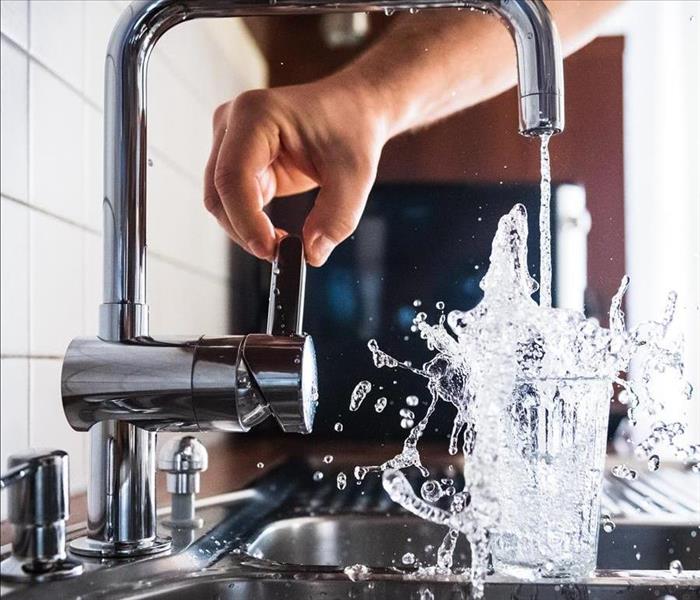Sink Overflow? We Can Help!
7/7/2020 (Permalink)
An overflowing sink is more than just an inconvenience – it can be a total disaster for your home or business. A sink that is clogged or left running can lead to major water damage if not taken care of quickly. If you want to prevent this kind of damage, follow these prevention and cleanup tips.
How to Prevent Sink Overflows
The best thing you can do to prevent a sink overflow is to stop your drain from getting clogged up in the first place. Just because something can go down the drain does not mean that it should go down the drain.
Food scraps, for instance, should be kept out of the sink as much as possible. If you don’t already have a strainer in your sink drain, get one. You should throw out as much food as possible before dishes end up in your sink, especially things like coffee grounds, pasta, rice and fibrous foods, which are notorious for clogging up drains. The strainer should be able to catch everything else fairly easily – just make sure you keep it clean.
Grease, on the other hand, won’t be caught by a strainer because it runs clear and fluid when it gets hot. It’s only after the grease cools down and becomes gummy that it can pose a problem for your drains, building up on the sides of your pipes over time to create serious clogs. Instead of pouring grease down the sink, place it in a sealable container and throw it in the trash.
On top of food and grease, hair can often clog sink drains up, especially in the bathroom. While a few hairs won’t ruin your sink, a tangled clump of hair can become one of the most stubborn clogs imaginable. A bathroom sink strainer will allow you to throw hair in the trash where it belongs.
How to Clean Up a Sink Overflow
First and foremost, make sure that no more water is overflowing – you don’t want the problem to get worse before you start to make it better.
Your first priority is extraction. Mop up as much of the water as you can, paying special attention not just to your floors but to pantries and cabinets that may also have let water in as well.
Once you’ve removed as much water as you can, move on to drying. Open all cabinets so they can get some airflow, then get as many fans as you can find and start running them in the affected area. Keeping the air moving is vital for drying.
Once everything’s dry, go through and clean all surfaces with an antibacterial cleaner. Even if the water that overflowed was clean, you want to be sure that there won’t be any bacterial or mold growth over time.
Even if you follow these steps, though, there’s a chance that it won’t be enough. Water can very quickly get under floors and behind walls in a way that’s extremely difficult for the average homeowner to detect and reverse. If you’ve suffered serious water damage caused by a sink overflow, give us a call at 716-674-1103 – we’re here to help!



 24/7 Emergency Service
24/7 Emergency Service